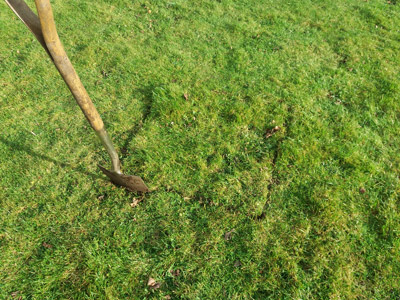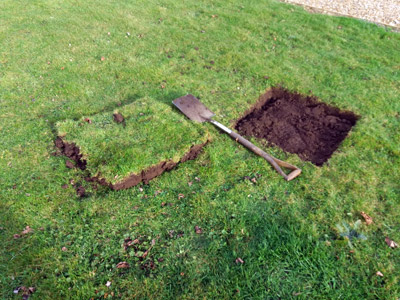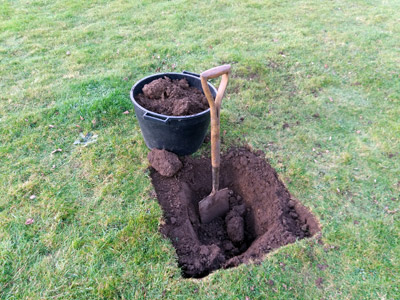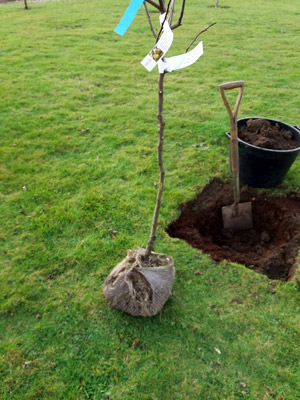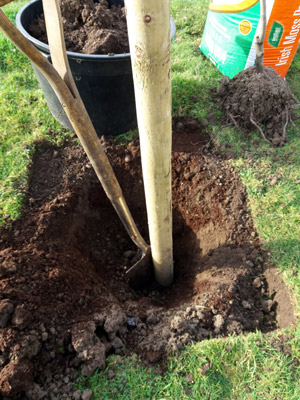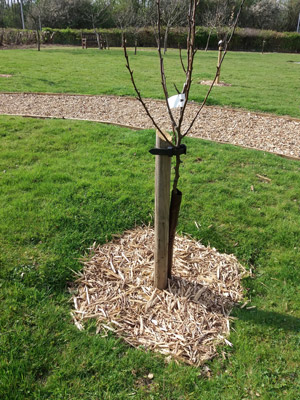How to Plant a Tree
- Trees are best planted in the dormant season, this is from leaf drop in late autumn to bud break in early spring
- Small trees establish better and quicker than large trees, small trees will often outgrow large ones within 2-3 years
- Newly planted trees should be "babied" through their first summer, and maybe the second too, watering and weeding around them.
- The purpose of a stake is mainly to prevent the wind from rocking the rootball while the roots are establishing.
A tree is a very long-lived plant, even short-lived trees will be around for 30-40 years, depending on species and situation and 100 years+ is quite possible for many. When planting a tree another 10 minutes effort is nothing compared to how long the tree will be there so you might as well do it properly, especially when cutting corners could result in a short life and being back to square one again but having lost a few years of growth.
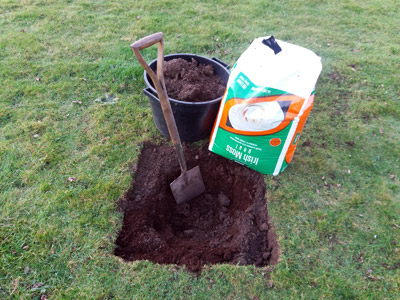
Mix in some organic matter, garden compost, well rotted manure or something out of a bag. Fill about 1/3 to 1/2 the volume of the hole and then dig it into the surrounding soil. The idea is to create a softer buffer zone between the roots and soil proper. You can also add some granular fertiliser to the hole such as gromore or blood, fish and bone and mix it in well.
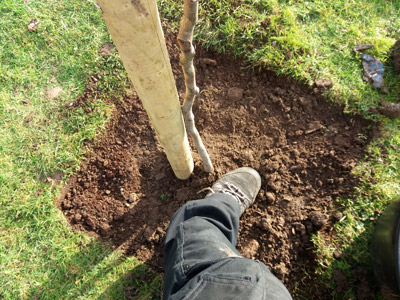
Remove the cloth binding and plant the tree at the old soil level mark on the stem, take care not to bury it more deeply than it was, or have it higher above the ground. You will probably have to make a slot in the rootball/compost from the pot to get the tree close to the stake so it is vertical rather than leaning, use your hands for this and tease out any roots rather than cut or damage them. Fill in with the soil you dug out and carefully firm down all round with your foot.

Tie the tree to the stake, the stem of the tree should not be rubbing on the stake, this commercial tree tie has a spacer to prevent this. It should be firm but not too tight. Old nylon tights or stockings can be used for a tie instead of a bought one, tie in a figure of 8 so the tree is not rubbing against the stake.
Finally I cut the top of the stake off as it was too long, in this case sticking up above the crown (where the branches emerge from the trunk) where it could have interfered with growth or rubbed against the branches when the wind blew causing them injury.
The stake should be left in place for at least two years, occasionally checking it doesn't get too tight and loosening it if it does, though commercial ties are often designed to expand with the tree or break if they become too tight.
The rabbit guard can be left in place for longer and expands with the tree. As the tree gets older, the bark becomes tougher and the rabbits will leave it alone.
The tree should be watered during dry spells over the period of the next year whenever it has leaves. An occasional soak (half to one bucketful once a week or fortnight) is preferable to little and often as the latter can encourage the tree to make shallow roots rather than deeper roots that go looking for water. In the second year, it should be able to look after itself, though give it a good soak during any very dry spells that may arise, though less so than the first year.
The base should be kept free of grass and weeds for at least two years. Using bark chips as here helps suppress weeds and the space around the tree makes mowing easier if it is planted in a lawn.

